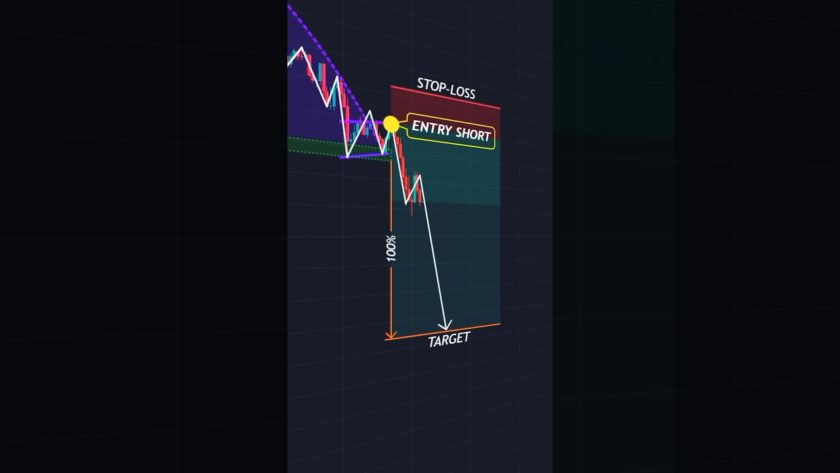Photo: Pixabay
Two weeks ago we used this space to talk about a report written by Professor Dr. Tim Weingartner of Lucerne University on the role blockchain technology and tokenization is playing in the construction of the new, digital world. Weingartner wrote about a virtual reality that was superseding a no-longer adequate physical one.
Displacement of the old structure in favor of the new was inevitable and would be felt in all aspects of life, and blockchain was helping to bring this about.
Using Dr. Weingartner’s research, we argued that while blockchain and tokenization are accelerating this process, they are also creating value bridges, whereby assets, ideas, and functions are transposed from the waning model to the waxing. The image we used to try and capture the significance of this process was that of Noah’s ark.
Though you may not think of the exciting technological developments of the past few decades—developments that have undoubtedly made material existence more comfortable for a vast amount of people—as cataclysmic, what they are a part of, as supported by Dr. Weingartner’s study, is nothing less than the end of one cycle and the dawn of a new one.
What the ark functioned as was a means of bringing man out of death in the destruction of the waters into a new life in the new reality that emerged once the waters receded. In short, it was a rebirth and a transfiguration, and it was achieved by Noah bringing on board with him not just his loved ones and livestock, but all things of value; all knowledge, all tradition.
Like the ark, the blockchain is a means of transferring the things we call our own through the destructive waters of change to steady, fertile ground.
This week it became clear that more and more businesses are coming around to the fact that this technology is part of something bigger, something their future existences may very well depend upon. Almost as if they had read our column, major corporations have seemingly lined up in pairs to announce that they are working on their own blockchain-related projects.
Nike, Phillip Morris, Samsung, Jaguar, Facebook, Porsche, JP Morgan, Volkswagen, and Disney were all in the headlines this week in relation to blockchain investment and development.
In this edition of Max’s Corner we thought it would be fitting to take a look at some of the major projects making headlines this week and what they mean for the industry moving forward, highlighting how this corporate exodus will impact the decentralized vision at the heart of what we do here at Bytecoin and of what so many people do across this industry.
Nike Gets its “Cryptokicks”
Among the more interesting developments of the past week was that American footwear and apparel company Nike has filed a patent with the US Patent and Trademark Office for the term “Cryptokicks.” According to the patent application, Nike’s Cryptokicks will be part of a concerted effort from the company to get involved in the cryptosphere.
Cryptokicks will seemingly be the name of Nike’s own token, which Nike will be offering alongside a crypto-based wallet and other “downloadable mobile applications for providing access to crypto collectibles, crypto art, and application tokens.” All of this will be available on the company’s online store in addition to the sportswear that they sell.
Nike further specified that their wallets will be used for “financial services, namely, providing a digital currency or digital token for use by members of an online community,” and that this online community will feature a number of blogs and online games with crypto collectible prizes.
Philip Morris Sees Blockchain as Way of Eliminating Fraud
For each pack of cigarettes they produce, American tobacco company Philip Morris has to have a stamp issued for the equivalent of about $5.5. The advent of high-definition printing has seen the practice of counterfeiting these stamps soar to where Philip Morris is estimated to lose out on about $100 million annually due to the efforts of counterfeiters.
At the London Blockchain Expo representatives from the tobacco giant announced that they want to launch their own public blockchain as a way of combating fraud on this end. The company estimates that by instituting their own blockchain to ensure that valid tax stamps are being used they will be able to save about $20 million.
Recently many companies have unveiled plans to create their own blockchains, but where Philip Morris differs from the majority is in the type of blockchain. The tobacco company wants their blockchain to be public to ensure that it will have more nodes than a private chain and in the hope that it will become used industry wide.
Getting stakeholders to buy into the blockchain, a necessary step in industry-wide acceptance, will be a challenge, and the company is currently looking at ways to incentivize participation.
Global Head of Architecture and Tech Innovation at Philip Morris, Nitin Manoharan, acknowledged the difficulties of attaining wide-scale cooperation, but revealed that the benefits of this kind of chain outweigh the drawbacks, saying:
“Permissioned blockchains are fairly simple. The opportunity is small and you can achieve everything that permissioned blockchain does with existing infrastructure and existing tools. The real value is with public blockchains where you can have multiple players coming in and participating in a trustless manner.”
Rumors Swirl of a Samsung Coin
Moving forward, a report out of Korea has been making some waves due to its claim that South Korean conglomerate Samsung is planning on building its own blockchain replete with its own native coin.
The project is purportedly being carried out by Samsung’s blockchain division but is not clear whether the mainnet will be public or private, or some kind of hybrid between the two. The source for the report claims that the project will be based on the Ethereum network, even though Samsung already has its own blockchain platform, Nextledger.
For some time now Samsung has been expanding its activity in the cryptosphere, so this report is not likely to surprise anyone who has been following their movements. Not long ago Samsung released the Galaxy S10, their flagship mobile, with a built-in crypto wallet and exchange.
At the time of the release, many were dismayed at Samsung’s decision to not support Bitcoin on their mobile wallet, opting instead to make the wallet exclusively Ethereum and ERC-20 compatible. Now, should the Samsung coin drop, customers with the S10 will presumably already have a wallet for it.
What About the Little Guy?
This industry, though perhaps it is not as visible as it once was, was structured by people who wanted to return economic power back to the individual. For many of us who got involved in the early stages, blockchain and cryptocurrency were antidotes to ever-creeping corporatism and a global banking system that had “brought whores for Eleusis” to borrow a fitting expression.
And in the early days—hard as it may be to believe for some just getting involved now—crypto was anathema to the financial system in place. If there was a response that differed from disdain it was scorn and laughter for something that was supposed to be a flash in the pan.
Well, that laughter of theirs died out long ago. But now is not the time for us to laugh. The ramping up of the corporate exodus into crypto only makes it more essential or us to ensure that in this new space there are decentralized structures that are as valid as centralized ones and they available to everyone.
Unless we want to see the promise of the new reality drowned in the mediocrity of the old, it is on us at Bytecoin and other leaders of this movement to build architecture in this new space that glorifies the individual and does not suffocate him.




